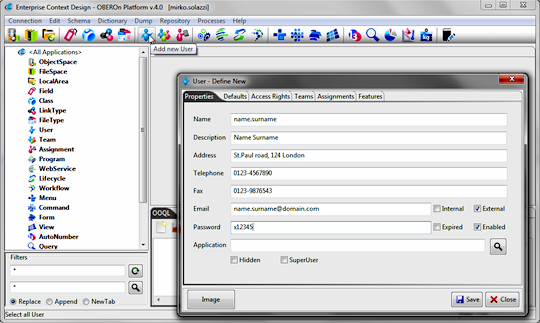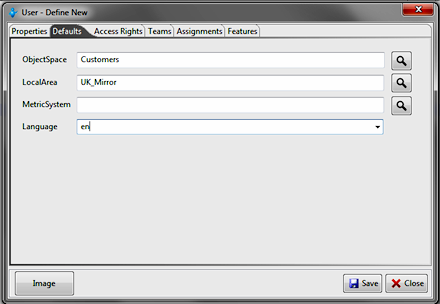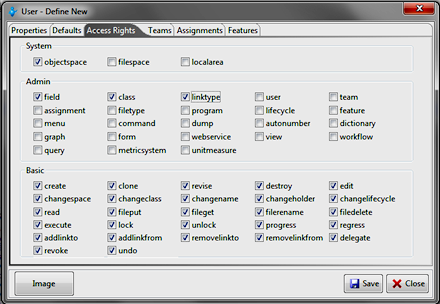 |
|||
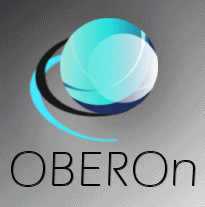 |
|||
| tutorial | ||||||||||||||||||||||||
create users and set their access rights
|
||||||||||||||||||||||||
| user define 'name.surname' !superuser | ||
|
description
'Name Surname' |
||
|
changename,changeholder,changelifecycle,read,fileput,fileget,
filerename,filedelete,execute,lock,unlock,progress,regress, addlinkto,addlinkfrom,removelinkto,removelinkfrom,delegate,revoke,undo } ; |
||
A default user "ADMIN" is created
when you install OBEROn; this user has all access rights, but is
not a SuperUser. You can access OBEROn using this account, but you
can't change its properties.
Users can share accesses for certain classes of business objects
or other to administrative objects, such as menus, commands, forms.
If many users need access to a class of objects, you should consider
creating a user category to represent the set of users. There are
two types of administrative objects that allow you to identify a
set of users (people) who require the same accesses: teams and assignments.
To decide which type of user category you should define, consider
what the users have in common and why they need some of the same
access rights:
• Team - Is a group of people who work on a common project
or for the same business area. In a team, people of many different
talents and abilities can share a set of functional skills, but
usually act in different jobs/roles. For example, a software development
team might include a graphic stylist and system architect in addition
to software developers.
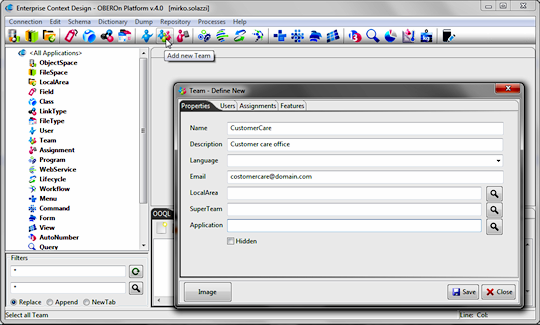
Teams are frequently hierarchical. In hierarchical teams, access
privileges that are available to a higher parent team are available
to all of the teams below it (SubTeams). If you select a
SuperTeam for a team, this team becomes a SubTeam and inherits
all access rights from the parent team.
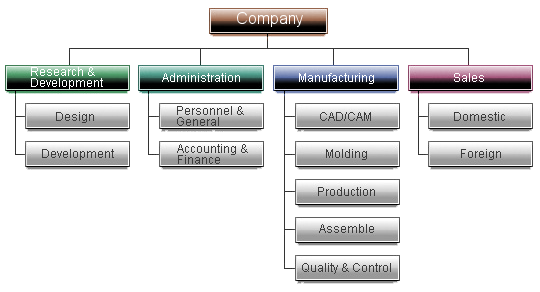
• Assignment - Is a collection of people who have a common job type: project manager, software developer, marketing director, designer and so on.
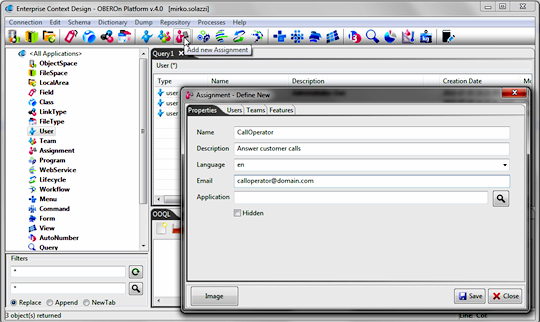
When adding a new team or assignment you
can specify, in addition to its name and description, other default
parameters such as:
- the email address - if specified is used to send email
messages in place of sending it to each associated users.
- the language and the localarea (only for team) -
these parameters are not internally used by the system, but can
be read and used by some custom application processes.
Moreover, you can assign specific users to this new category.
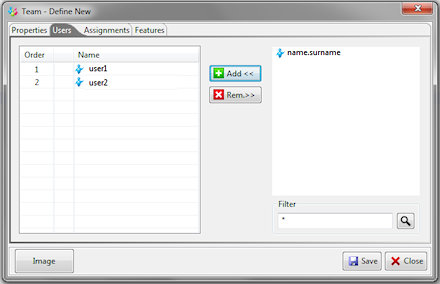
An equivalent team creation
OOQL command ![]() might be:
might be:
| team define 'CustomerCare' description 'Customer care office' | ||
| email 'team@domain.com' user 'user1' 'user2' ; | ||
and for the assignment definition
| assignment define 'CallOperator' description 'Answer customer calls' | ||
| language 'en' email 'calloperators@domain.com' user 'name.surname' ; | ||
A user can belong to any number of teams and can have
more assignments.
If a user belongs to a team, it automatically belongs also to the
SuperTeam and all its parent teams in the hierarchy. For example,
a designers associated to the Designer's division belongs also to
parent division "Research & Development" and, as consequence
to the Company.
In addition, all users belonging to different teams may have the
same specific assignment, in this case you can associate directly
the teams with the assignment; as result, all users in the teams
inherit the assignment privileges.
Creating a user category let you to avoid to add all user list every
time you define access rights for administrative and domain objects.
For example, suppose you create a user category, such as a team,
and assign a certain number of users to that team. If you enable
the team to perform a specific action and so you grant the group
full access to it, all the users within that group will have the
same access rights for that action.
When an application user attempts to perform an action for a domain object instance, OBEROn checks to see what type of credentials the user have in the user definition. If the user is a SuperUser the system allows the action and performs no further checking. If action involves read access only, the action is allowed; otherwise the access depends on the lifecycle settings.
| << local and distributed file storage |

Please Read: Privacy Policy and Terms of Use




